In yet another of our random adventures, we travelled from Egypt to Saudi Arabia by ferry, spending a month in the two countries combined. Coming from the African continent, at the moment you can reach Saudi Arabia directly without flying, by ferry from Egypt. In better times you could also get a ferry from Port Sudan to Jeddah but that’s obviously not a go at the moment.
This post is a trip report. It’s the itinerary we made for the eighteen days we spent in the Kingdom of Saudi Arabia, plus a bit of other info about getting there in the first place, our route, traveling around, and lessons learned along the way.
Before you go
Getting around
Sleeping
Eating
On the road – our itinerary
Before you go
Visas and money
You can get a Saudi visa online in advance, or on arrival. You might want to bring some USD or SAR (the currency used in Saudi Arabia) as well, but it’s easy to get local currency from ATMs.
What to wear
Women in particular, should obviously dress modestly. Abayas and hijabs are not required but you’d want to keep shoulders and legs covered. I’d keep a scarf handy too, for mosques and just-in-case.
Medinah Salah – Hegra
Everybody’s heard of Petra (and if not, you can read all about it on this blog). But 500 km to the south, in this country long closed to outsiders, lie the remains of the Nabateans’ much less famous second-city: Hegra.
Due to Saudi Arabia’s new plans to draw in huge crowds of tourists (and then corral them on tours and behind fences) there’s no more showing up and exploring Hegra just like that. Visitors to the site need to be on a mandatory guided tour complete with a bus and planned stops. You can book your entrance slots on arrival in Al Ula at the Visitors’ Centre, or online in advance. Don’t screw up: if you don’t have a lot of time or flexibility, you should prebook your spots. We didn’t know this in advance and sure enough, tour slots were booked right out for the next two days, but we had time to wait.
A lot of these tourist sites and visitor centres and development were just kicking off literally weeks before we went, so there were quite a few hitches. I’d assume things are working more smoothly now.
Cultural village experiences
It was in Khaybar that we first encountered Saudi Arabia’s ambitious plans to develop a high-end tourism sector, without actually offering much of anything to visitors besides a complex ticketing scheme. All cultural and historic sites are now closed off and pricey to enter, with mandatory guided tours that are just too convoluted for what they’re showing you.
Although they’ve got visitor centres at each site that are actually pretty good, providing lots of info and booking assistance for the guided tours – and they feed you a lot of dates – the tours don’t really reflect the cost. I’d pick one of the ‘Cultural Villages’ and leave it at that.
Getting around
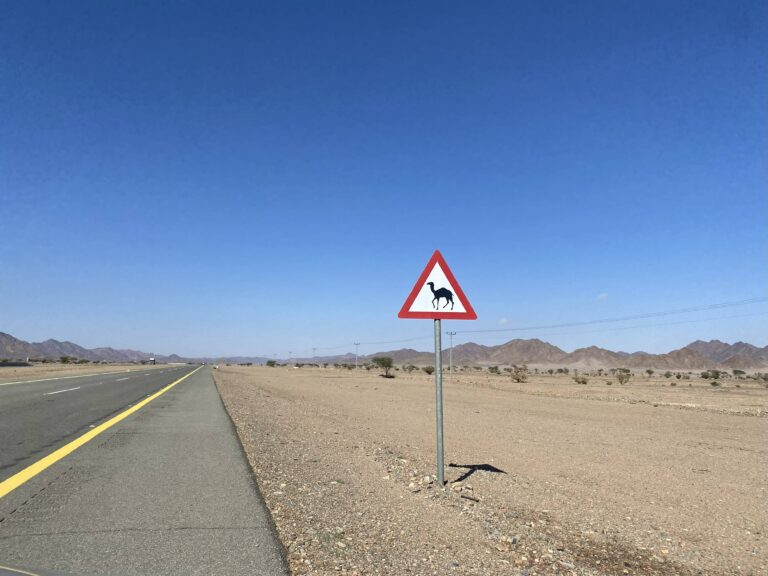
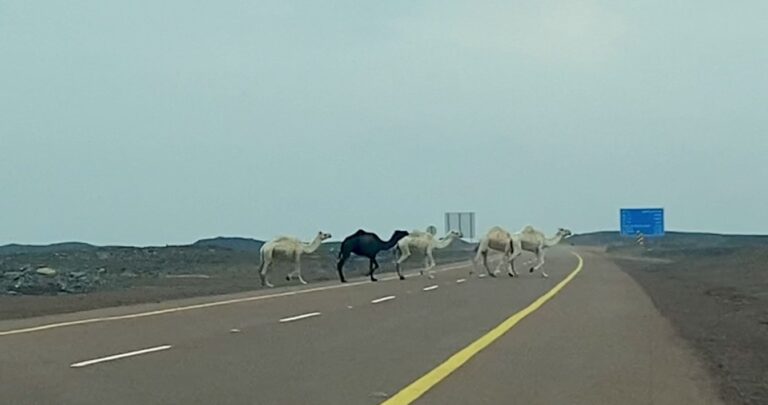
However you opt to get around, keep in mind that Saudis are not early risers. Smaller places are like desolate ghost towns all morning, nothing opens early (or even at a reasonable hour, I’d venture to say). Shops and restaurants open, and then close for ages throughout day with prayer times, and then eventually open again until late at night. Plan your journeys – and your meals – accordingly.
Public transport
Everything we read in advance said the bus network was extremely limited and difficult to use. While it’s not the best, a few busses in the north patched together with a couple of hired cars and a flight to the south, worked perfectly fine for us. Oh yes, and a ferry and some hitch-hiking.
Without a car, you will probably need to combine some busses and hitching to get around.
Hiring a car and driving yourself
Road-tripping in Saudi Arabia: so many things to think about, starting with numerals, maybe. Also including (but not limited to), countless speed bumps, spilling za’atar all over yourself on said speedbumps, camels, guys in jeeps herding camels, Saudi drivers in general, and not driving into haram zones (areas ‘off-limits’ to non- Muslims).
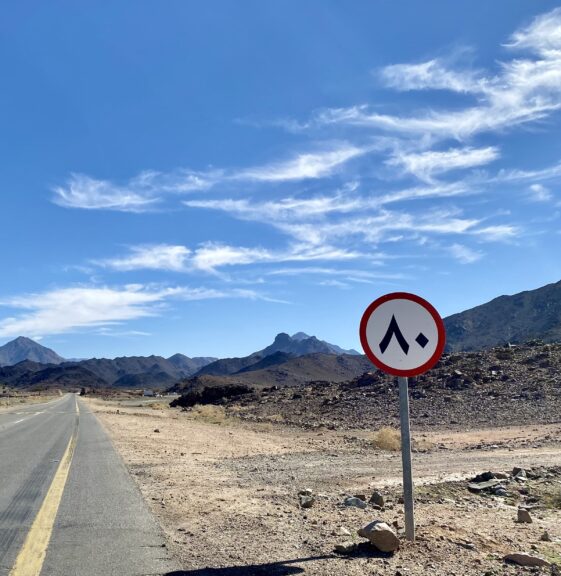
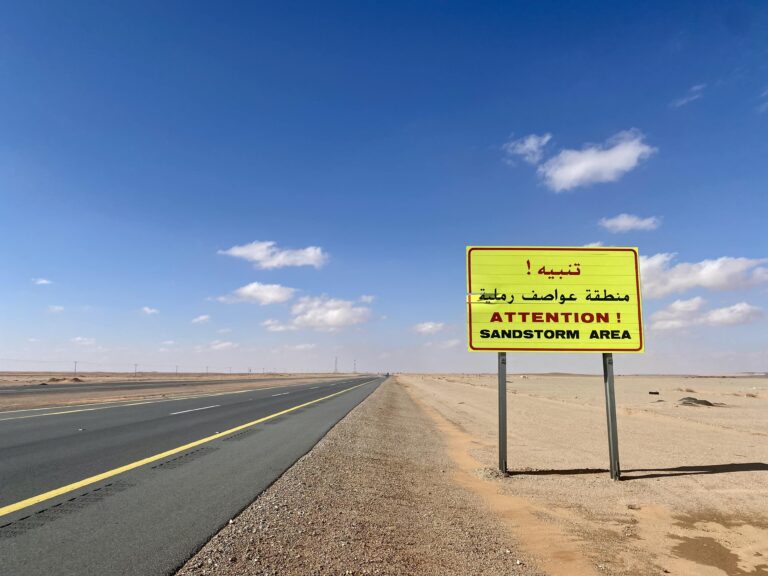
Mostly everyone we crossed paths with in Saudi Arabia was super friendly to us, shouting hello or welcome to Saudi Arabia from across the street when we walked by. Until they got behind the wheel: when we were driving they honked like hell at us along with everyone else.
So best to hire a car here only if you’re an aggressive driver (ahem, Oyv) in the first place.
You’ll have some vast distances to drive, so although it’s easy to find petrol, you should keep the tank topped up.
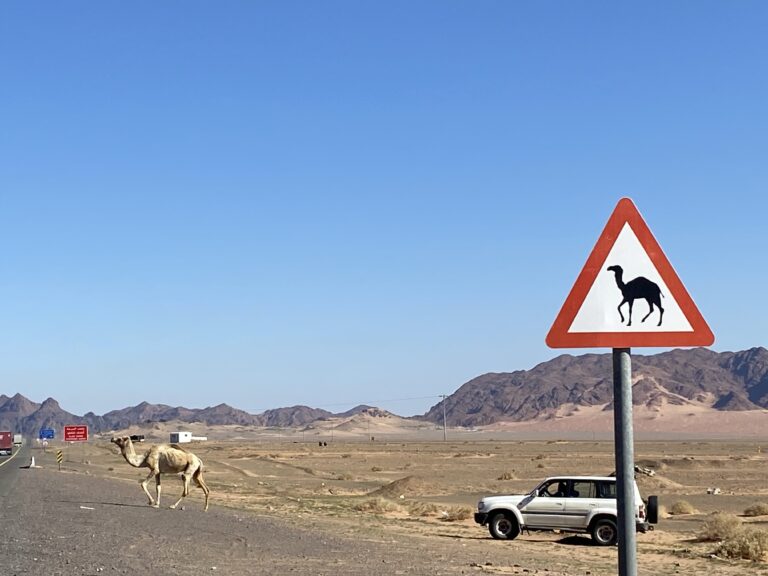
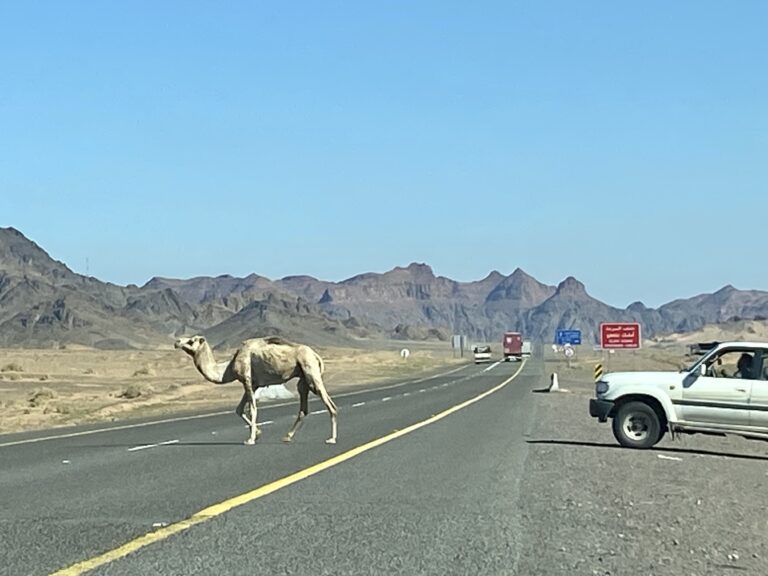
Sleeping
We didn’t book any rooms ahead of time. Only in Al Ula was availability limited, and we had to try a few places. Rooms were pretty cheap, other than in Duba, where every hotel we checked (and we checked quite a few) was asking 90-100 USD for almost nothing.
The tricky part is finding them. A lot of hotels are apartment-style and they aren’t signed at all. Others are signed but not at all recognizable to us. We usually just tracked places down on Google Maps.
And these hotels, despite being ‘proper’ hotels (ie not hostels, not guesthouses) and aimed at the allegedly burgeoning high-end tourist sector, offered no amenities, and I mean no amenities. Not a towel, not a square of paper, not a sliver of soap. Ashtrays and boxes of kleenex, yes. In huge, cold, dingy, echoing family-style rooms, with varying levels of cleanliness and a vague (or strong) smell of cigarettes. Often we could tell other people were actually there only by the mountains of empty takeaway boxes and dishes outside every door up and down the hall – families tend to eat in, I guess to avoid women eating in public.
We weren’t sure about the whole men-and-women-sharing-hotel-rooms thing, so we brought our marriage certificate with us just in case. It turns out that for us it’s not a problem, although it definitely is a problem for locals. A ‘big problem’ as the receptionist at our hotel in Abha said, as he called the police on an obviously unmarried couple who couldn’t produce ID and a family book at the front desk.
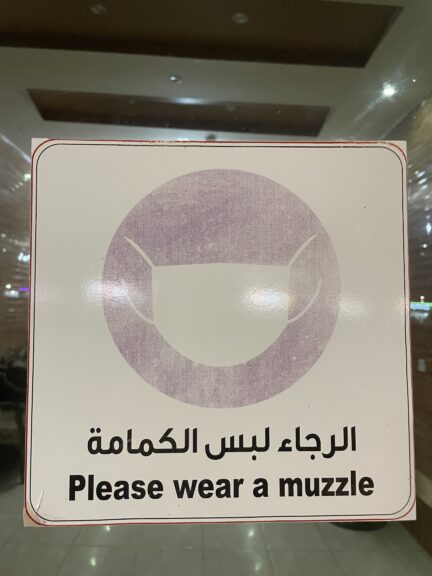
Eating
Well, there’s Khabsa, the Saudi national dish served straight out of a massive platter so everyone can dive right in, and the delicious and ubiquitous Pakistani food found everywhere thanks to the huge influx of migrant workers. Otherwise, there is a lot of fast food and kebabs, and so on.
Also, dates. Mountains of them in every shop and snack stop.
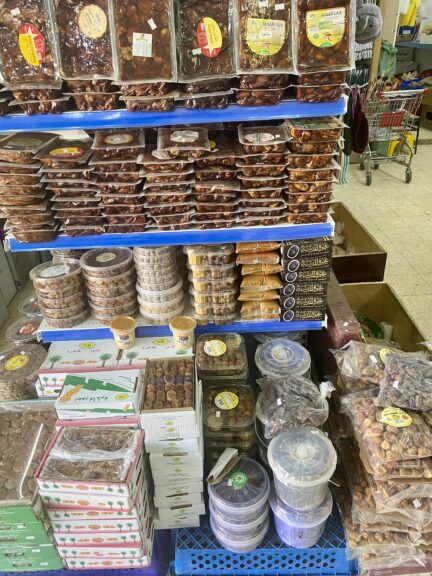
Keep in mind that many (if not quite all) restaurants have separate ‘family’ areas where women or any group with women in it, will eat.

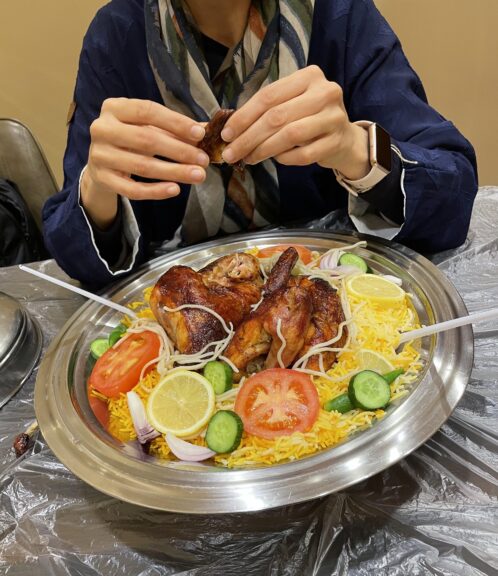


On the road – our itinerary
Here’s our itinerary for the eighteen days we spent in the Kingdom of Saudi Arabia.
Day 1 – ferry from Egypt
Day 2 – Duba
Day 3 – Yanbu
Days 4 and 5 – Medina
Days 6 and 7 – Khaybar
Day 8 – Tayma
Days 9 to 11 – Al Ula
Day 12 – Wadi Dissah
Days 13 to 15 – Abha
Days 16 and 17 – Jeddah
Day 1 – ferry from Egypt
When planning how to get from Egypt to Saudi Arabia (whilst already in Egypt) we noticed a dearth of information about ferries on the Red Sea. So the plan we eventually settled on was: ‘travel another seven hours from Aswan to a random port city, ask around, and see how that goes’.
And that is how we got ourselves onto a ferry to Duba, Saudi Arabia – which city, although totally unknown to us, is apparently the ‘Pearl of the Red Sea’. Incidentally, it’s not the only one. There is another ‘Pearl of the Red Sea’ in Eritrea and we’ve been there too. But I digress.
You can get from Safaga (Egypt) to Duba (Saudi Arabia) by overnight ferry. It takes about eight hours for the actual crossing and quite a few more hours before that getting out of Egypt. You can read my post about this entire process, here.
It was fun, we had a good night’s sleep in a perfectly comfortable cabin, woke up early to prayers on the ship’s intercom, and sailed smoothly into Saudi Arabia the next day.
Day 2 – Duba
The ferry doesn’t really follow a strict schedule but you’re likely to arrive in Duba later than you think. In our case, it was mid-afternoon.
The port is actually almost forty kilometers from the actual city and you’ll need a ride in – transport seems to be non-existent. You’ll probably need to hitch. There did seem to be some kind of dubious hotel, a restaurant, and possibly a bank at the port complex but there’s no reason to linger there so we caught a ride with a local fellow passenger. He enthusiastically reminded us that Saudi Arabia is safe and we’d face no problems at all, as the only other vehicle in sight tailgated us relentlessly, passed on the inside, and roared ahead of us onto an entry ramp. Driving, is easily the main/only concern you’ll have here.
At the first roundabout into town in Duba you have a few hotels, plenty of ATMs, food, coffee, and groceries. We downloaded the Kaiian taxi app and used that to get around easily.

Day 3 – Yanbu
The Saptco (public transport) office is at same roundabout on the way into Duba. We found daily buses running directly to Tabuk, Jeddah, Riyadh, Yanbu, and Medina. In short, it’s easy to leave the Pearl of the Red Sea, and thank goodness for that. We bought tickets to Yanbu, which is a six hour trip.
Yanbu was just a stopover for us to break up the trip to Medina. We stayed the night in what was to be the first of many vast cigarette-pervaded apartment-style hotels, and organized onward bus tickets to Medina.
We were unclear on whether, as non-Muslims we could actually go to Medina. The staff at the bus station did ask us a few questions about being Muslim (or not), but sold us the tickets regardless.
Days 4 and 5 – Medina
The second-holiest place in Islam, Medina, is another three and a half hours by bus from Yanbu. When we got out at the station we tried to book an Uber and a Kaiian but both were completely useless in Medina. We got around the good old fashioned way: flagging taxis and haggling.
We stayed two nights at Al Mekhan. Again, upon checking in the staff asked if we were Muslim but it didn’t matter that we said no.
We walked to the Al Haram area to get a look at the Prophet’s mosque and nobody stopped us or questioned us at any time. Both of us dressed respectfully and I had an abaya and headscarf on as well. How close you can actually go to the mosque is unclear, I think it depends on who you happen to meet if you enter the precinct. Just behave yourself.
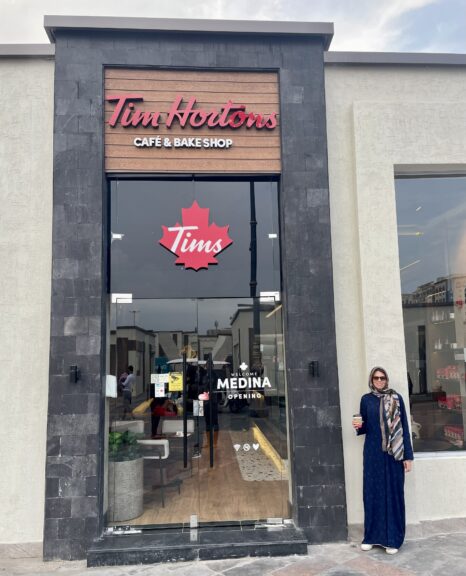
Later, we walked along a very long promenade filled with families and went to Quba mosque.
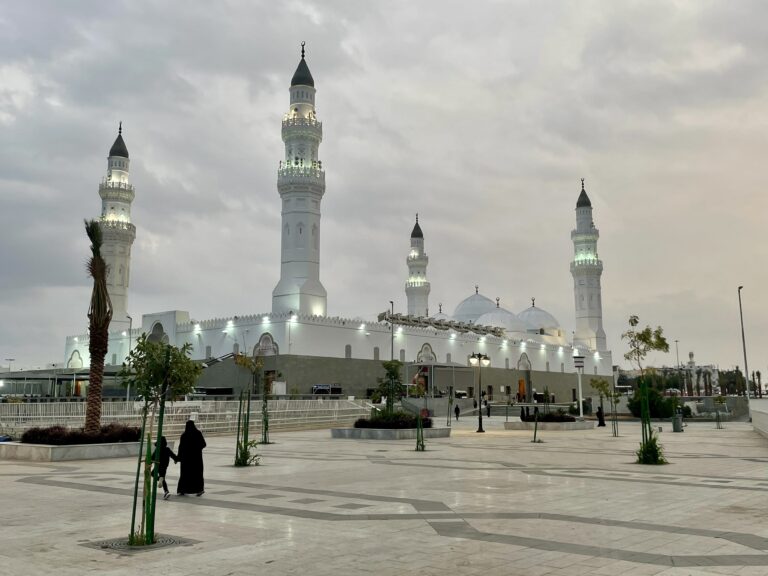
Quba mosque might (or might not) be the first mosque in world dating back to Mohammed’s lifetime, where he led the first Friday prayers. Either way, it’s impressive and the whole area is really nice to just walk and watch people.
Days 6 and 7 – Khaybar
We hired a car at Lumi at Medina airport and started driving for Khaybar. Going from the airport meant we could avoid the worst traffic on the first and second ring roads rather than driving straight out from the city center somewhere.
It’s three hours driving from Medina to Khaybar. We found a hotel – no English sign – across from the Calla Cafe. The cafe is only open at night but the coffee is good. We stayed two nights.
In Khaybar, you can check out the Khaybar Cultural Village – ancient mud cities and a citadel set in palmeries.
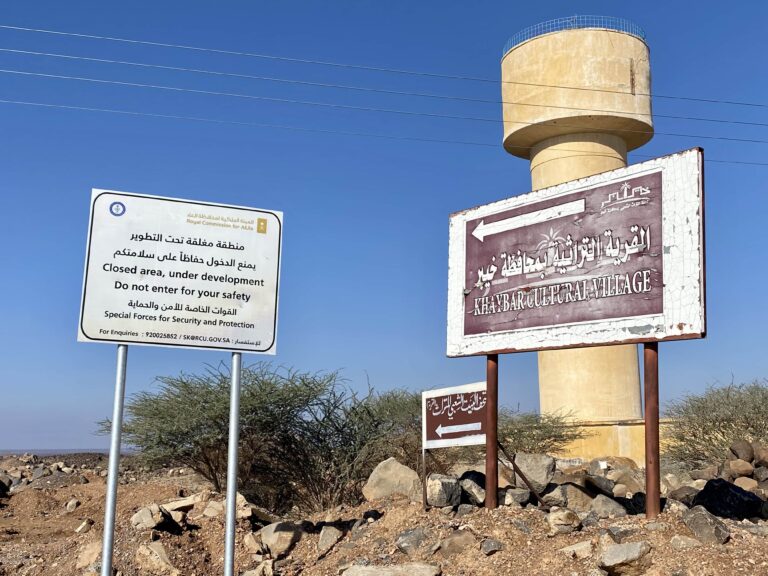
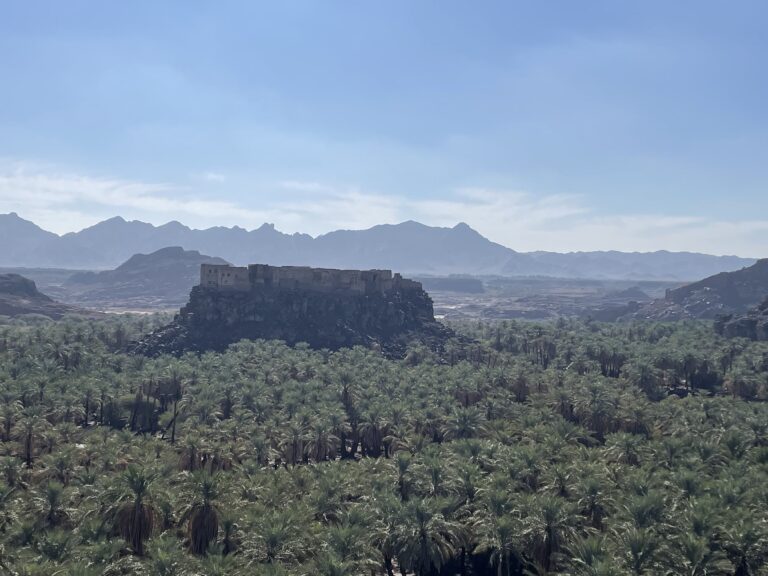
It’s interesting driving in the area – watch out for camels – but also a lot of volcanic rock and strange desolate landscape.
Day 8 – Tayma
Because we hadn’t learned our lesson yet regarding forced tours of historic mudbrick oasis cities, we drove about three hours from Khaybar to Tayma.
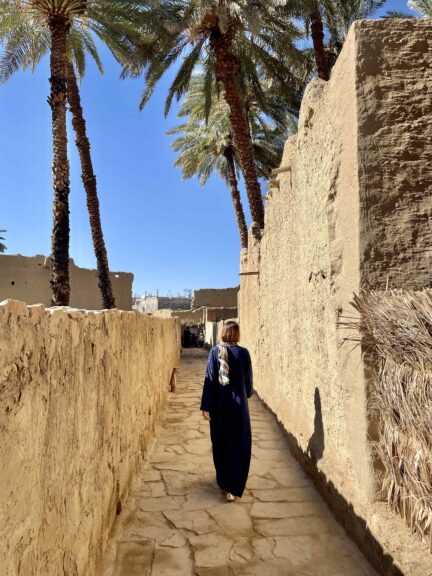
We went for the ‘cultural village’ experience here which covered the old Governor’s palace, a palmerie, and an ancient, camel-drawn well. We stayed the night in Tayma.

Days 9 to 11 – Al Ula
It’s around three hours easy driving from Tayma to Al Ula. On arrival, we found out that you need to make advance bookings for Medinah Salah, or Hegra: go straight to the Visitors’ Centre and book your tour slots, or better yet, book ahead online.

The star of the show, you absolutely don’t want to miss this ancient site.

Hegra was once a major stop on the caravan route for merchants trading in incense, myrrh, and spices. But all that changed with the arrival of the Romans and a shift in the trading routes. Abandoned, Hegra slid into obscurity and there it remained for nearly 2000 years.
The Nabateans didn’t put their story in writing (other than by inscribing curses on tombs). Much of what is known about them comes from second-hand sources – the Greeks, the Romans. But they undoubtedly left their mark in the desert with this necropolis of massive, elaborately carved sandstone tombs, scattered across the sands of time.

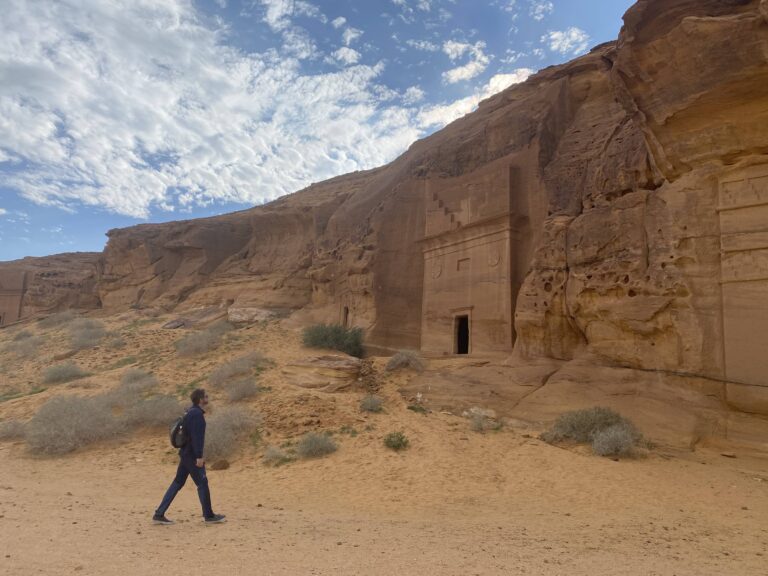
Also around Al Ula you have some rugged desert landscapes and well-known rock-formations. They are fenced-off now and restricted to tours which kind of removes for me anyway, much of the interest in exploring rock formations and landscapes.
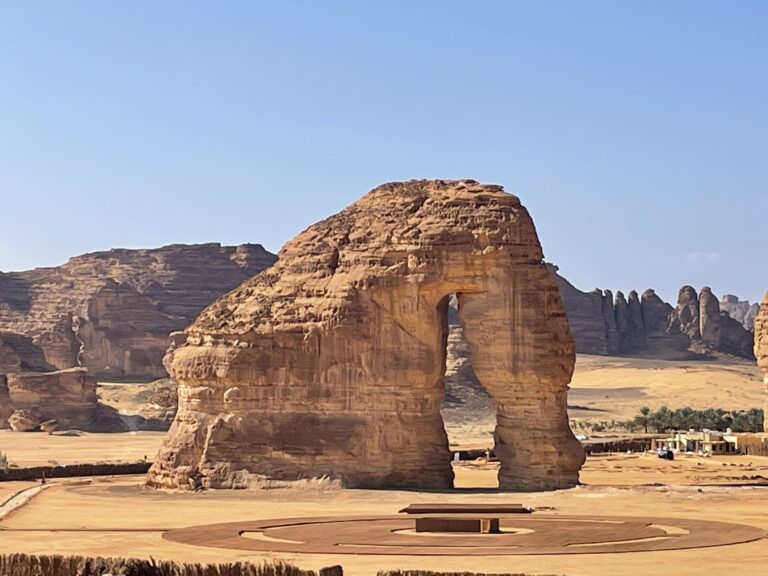
Day 12 – Wadi Dissah
We went to Wadi Dissah and stayed one night, as a diversion while we were waiting for our spots on the Hegra tour. It took about three and a half hours driving, each way from/to Al Ula.
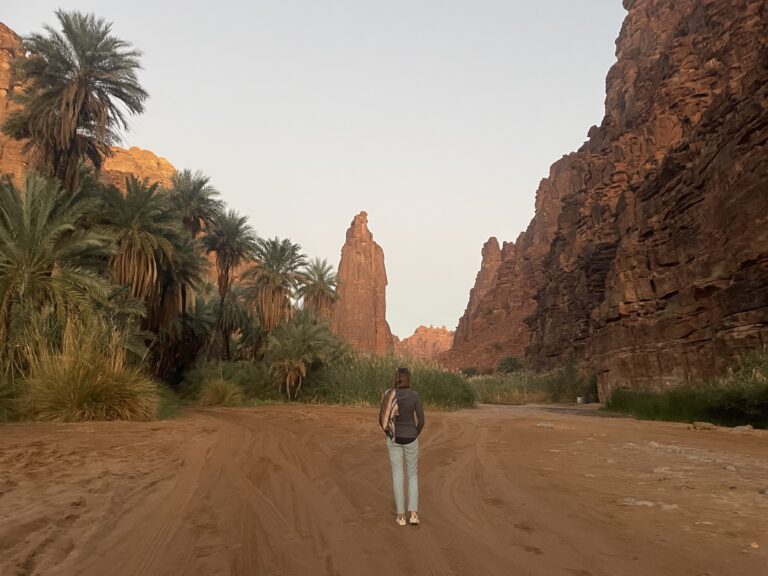
It’s a beautiful spot and I’d highly recommend walking in the canyon at sunrise, or for that matter sunset.
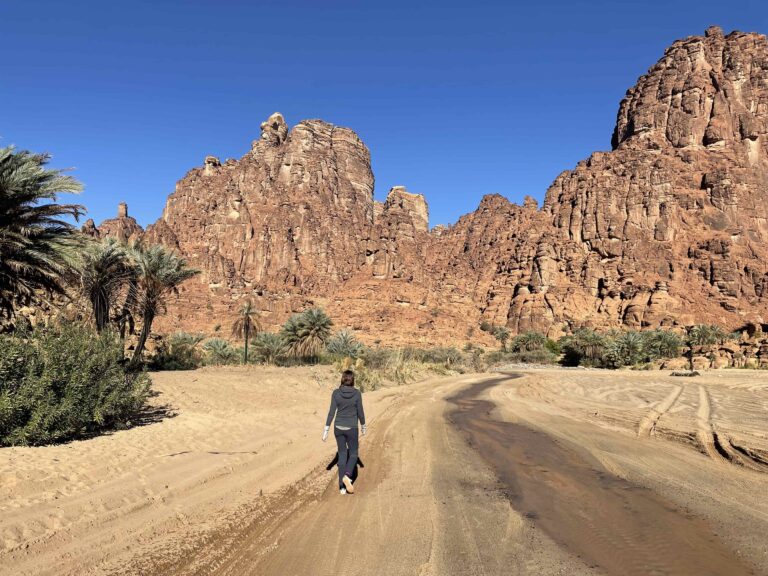
Driving from Wadi Dissah to Medina takes about seven hours.

Days 13 to 15 – Abha
We drove from Al Ula to Medina in about four hours, straight to the airport and dropped off our car.
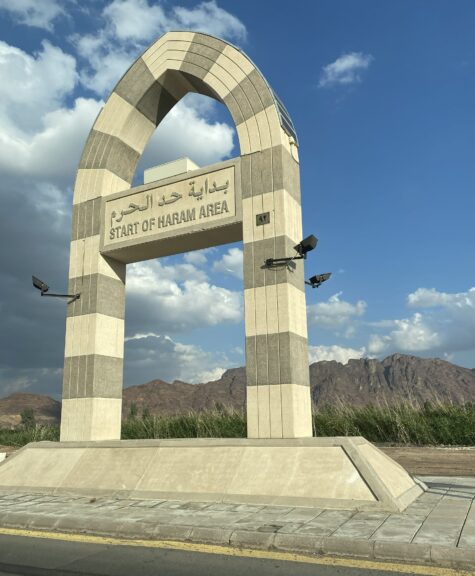
Then we took a flight down south to Abha.
We stayed three nights in Abha, and hired another car, specifically to drive to Raijal al-Ma. That’s a nine hundred year old village near the southern border with Yemen and it’s a full day trip, about two hours driving each way.

Days 16 and 17 – Jeddah
Finished up in Abha, we flew to Jeddah on day 16, and stayed there two nights, flying home on the eighteenth day.

(Relatively) liberal Jeddah, on the edge of the Red Sea and somewhere in between in every sense of the word, is the gateway to Mecca for Muslims on pilgrimage since the seventh century.

You will definitely want to spend some time exploring the old city, Al Balad, and strolling the corniche on the edge of the Red Sea.
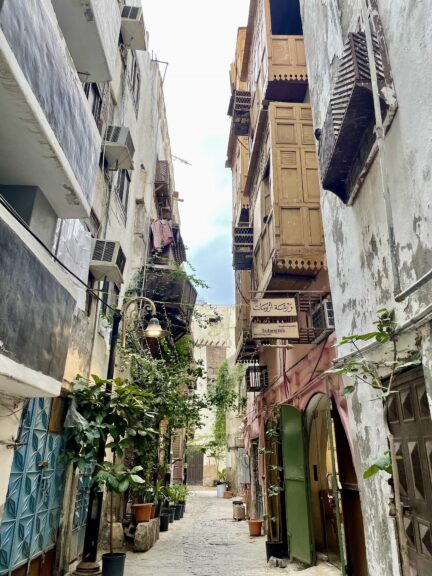
Read More
Check out the Destinations page for travel guides and stories about our other off-beat adventures all over the Middle East and beyond.

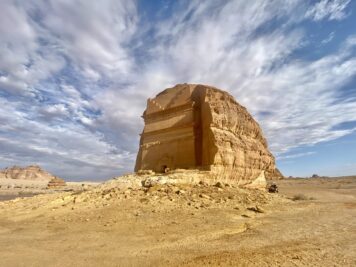

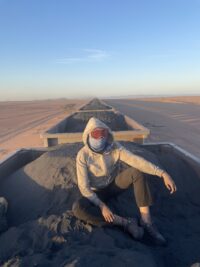
This Post Has One Comment
Nice post! Very well written and enjoyable to read.